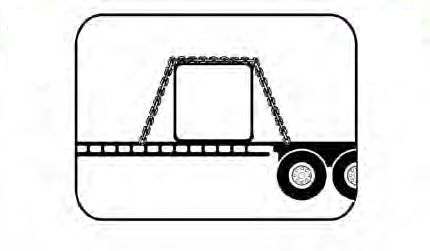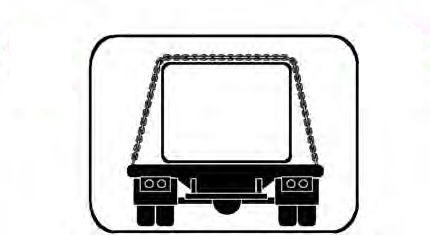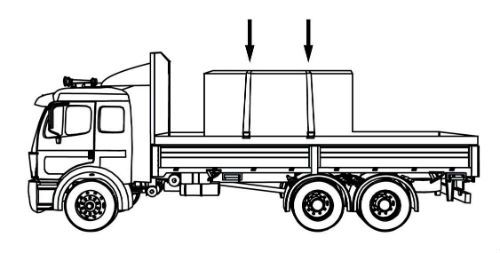Review Questions - Click On The Picture To Begin...

- 5,000 lbs.
- 10,000 lbs.
- 8,000 lbs.
- 16,000 lbs.
Quote From The CDL Manual:
The aggregate working load limit of all indirect tiedowns is the sum of the working load limits of each indirect tiedown.
- A female housing fixed to the side or ends of a vehicle to receive a stake or peg, and may also be used as an anchor point.
- A vertical barrier across a vehicle to prevent forward movement of cargo.
- A vertical barrier across the front of the deck of a vehicle to prevent forward movement of cargo.
- The depression formed between two cylindrical articles when they are laid with their eyes horizontal and parallel against each other.
Quote From The CDL Manual:
Well:
The depression formed between two cylindrical articles when they are laid with their eyes horizontal and parallel against each other.
- to unitize articles and is tensioned and clamped or crimped back upon itself. (same as "Strapping")
- to reinforce blocking.
- to prevent forward movement of cargo.
- to protect the cab in the event cargo should shift forward.
Quote From The CDL Manual:
Bulkhead:
A vertical barrier across a vehicle to prevent forward movement of cargo.
- Container chassis vehicle.
- Intermodal container.
- Pallet.
- Hook-lift container.
Quote From The CDL Manual:
Intermodal Container:
A reusable, transportable enclosure that is especially designed with integral locking devices that secure it to a container chassis trailer to facilitate the efficient and bulk shipping and transfer of goods by, or between various modes of transport, such as highway, rail, sea, and air.
- 90 degrees.
- 180 degrees.
- 30 degrees.
- 45 degrees.
Quote From The CDL Manual:

An indirect tiedown that is used to prevent front-to-back cargo movement must make an angle of at least 30 degrees with the deck when viewed from the side of the vehicle.

An indirect tiedown that is used to prevent side-to-side movement must make an angle of at least 30 degrees when viewed from the front or back of the vehicle.
- A reusable, transportable enclosure that is especially designed with integral locking devices that secure it to a container chassis trailer to facilitate the efficient and bulk shipping and transfer of goods by, or between various modes of transport, such as highway, rail, sea, and air.
- A vehicle especially built and fitted with locking devices for the transport of intermodal containers.
- A specialized container, primarily used to contain and transport materials in the waste, recycling, construction/demolition, and scrap industries, which are used in conjunction with specialized vehicles, in which the container isloaded and unloaded onto a tilt frame body by an articulating hook-arm.
- A platform or tray on which cargo is placed so that it can be handled as an article. (Same as "Skid")
Quote From The CDL Manual:
Hook-lift Container:
A specialized container, primarily used to contain and transport materials in the waste, recycling, construction/demolition, and scrap industries, which are used in conjunction with specialized vehicles, in which the container isloaded and unloaded onto a tilt frame body by an articulating hook-arm.







 Cargo Securement Terms That Truck Drivers Should Know:
Cargo Securement Terms That Truck Drivers Should Know:



 TT On Facebook
TT On Facebook